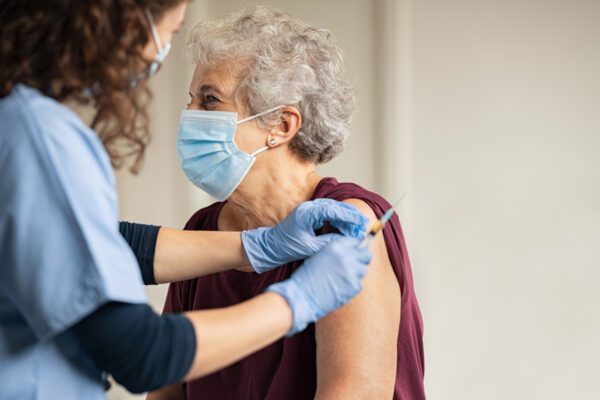Authored by ThinkHR
2019 and 2020 EEO-1 Reporting to Open at End of April 2021
On March 12, 2021, the U.S. Equal Employment Opportunity (EEOC) announced that the EEO-1 Component 1 data collection for 2019 and 2020 will open at the end of April 2021 and close in July 2021. Filers should begin preparing to submit data in anticipation of the April 2021 opening. The exact closing date will be posted when the data collection launches. Employers will be notified of additional details and how to access the online filing system in April. Read more on the EEOC’s employer EEO-1 Data Collection website.
American Rescue Plan Act – Extension of EPSL and EFMLA and New COBRA Subsidies
On March 11, 2021, President Joe Biden signed the American Rescue Plan Act of 2021 (HR 1319) (ARPA) to address the ongoing economic impacts of COVID-19. The portions of the act that directly affect HR functions are discussed below.
Optional Extension of Sick and Family Leaves
Part of the ARPA is an extension of the current tax credit scheme for Emergency Paid Sick Leave (EPSL) and Emergency Family and Medical Leave (EFMLA) under the Families First Coronavirus Response Act (FFCRA). The FFCRA required many employers to provide EPSL and EFMLA in 2020, but became optional when it was previously extended to cover January 1 through March 31, 2021.
The new extension under the ARPA takes effect April 1, 2021 through September 30, 2021 and, similar to the current version, remains optional. In addition, tax credits are available but only to employers with fewer than 500 employees and up to certain caps. To receive the tax credit, employers are required to follow the FFCRA’s original provisions. For example, they cannot deny EPSL or EFMLA to an employee if they’re otherwise eligible, cannot terminate them for taking EPSL or EFMLA, and must continue their health insurance during these leaves.
Emergency Paid Sick Leave (EPSL) Changes
Key changes to EPSL, effective from April 1 through September 30, 2021, are:
- Employees may take EPSL to get the COVID vaccine and recover from any related side effects.
- Employees may take EPSL when seeking or waiting for a COVID-19 diagnosis or test result if they’ve been exposed to the virus or if their employer required a diagnosis or test.
- Employees will be eligible for a new bank of leave on April 1. Full-time employees are entitled to 80 hours and part-time employees are entitled to a prorated amount. Unused hours from before April 1 will not carryover.
- Employers cannot provide EPSL in a manner that favors highly compensated employees or full-time employees or that discriminates based on how long employees have worked for the employer (tenure). This is discriminatory and will disqualify the employer from receiving the tax credit. Failing to comply with the FFCRA (including its antiretaliation provisions) also disqualifies employers from receiving the tax credit.
Emergency Family and Medical Leave (EFMLA) Changes
Key changes to EFMLA, in effect from April 1 through September 30, 2021, are:
- EFMLA may be used for any EPSL reason, in addition to the original childcare reasons. This includes the two new EPSL reasons noted above (vaccination and diagnosis/test results).
- The 10-day unpaid waiting period was eliminated.
- The cap on the reimbursable tax credit for EFMLA was increased to $12,000 (from $10,000). This applies to all EFMLA taken by an employee beginning April 1, 2020. This change accounts for the additional 10 days of paid time off; however, the daily cap of $200 remains the same.
- Employers cannot provide EFMLA in a manner that favors highly compensated employees or full-time employees or that is based on how long employees have worked for the employer.
Reasons for Using EPSL and EFMLA
Starting on April 1, employees may take EPSL or EFMLA under the same conditions, which are:
- When quarantined or isolated subject to federal, state, or local quarantine or isolation order.
- When advised by a health care provider to self-quarantine because of COVID-19.
- When the employee is:
- Experiencing symptoms of COVID-19 and seeking a medical diagnosis;
- Seeking or awaiting the results of a diagnostic test for, or a medical diagnosis of, COVID-19 because they have been exposed or their employer requested the test or diagnosis; or
- Obtaining a COVID-19 vaccination or recovering from any injury, disability, illness, or condition related to the vaccination.
- When caring for another person who is isolating or quarantining due to government or doctor’s orders.
- When caring for a child whose school or place of care is closed due to COVID-19.
Tax Credit Review
The tax credits available between April 1 and September 30 are the same as under the original FFCRA, except for the increased aggregate cap for EFMLA. Regardless of how much EPSL or EFMLA an employee used prior to April 1, the available tax credits are as follows:
- The credit available for EPSL when used for reasons 1, 2, or 3 (self-care) is up to 100 percent of their regular pay, with a limit of $511 per day.
- The credit available for EPSL when used for reasons 4 or 5 (care for another) is up to 2/3 of their regular rate of pay, with a limit of $200 per day.
- The credit available for EFMLA for any reason is up to 2/3 of their regular pay, with a limit of $200 per day and a cap of $12,000 per employee.
Employers may also claim a credit for their share of Medicare tax on the employee’s wages and the cost of maintaining the employee’s health insurance (qualified health plan expenses) during their absence.
COBRA Subsidies
ARPA provides a 100 percent COBRA subsidy if the employee’s work reduction or termination was involuntary. The subsidy applies for up to six months of coverage from April 2021 through September 2021 (unless the individual’s maximum COBRA period expires earlier). For group plans subject to the federal COBRA rules, the employer will be required to pay the COBRA premium but will be reimbursed through a refundable payroll tax credit.
Employers with fewer than 20 workers usually are exempt from the federal COBRA rules, but their group medical insurance plans may be subject to a state’s mini-COBRA law. In that case, it appears the subsidy will be administered by the carrier. The carrier will pay the premium and then be reimbursed by the government.
Employers will need to work with their group health plan carriers and vendors on how to administer the new subsidy provision. Although it takes effect April 1, 2021, employees who were terminated earlier but are still in their COBRA election window also are included. Federal guidance is expected to be released by April 10, including model notices that plans may use.
Note: The COBRA subsidy does not apply during FFCRA leaves because employees are entitled to maintain their health insurance during those leaves on the same terms as though they continued working
Additional Information
The White House has a website dedicated to the American Rescue Plan, and according to the IRS, it is “reviewing implementation plans for the American Rescue Plan Act of 2021. Additional information about a new round of Economic Impact Payments, the expanded Child Tax Credit, including advance payments of the Child Tax Credit, and other tax provisions will be made available as soon as possible on IRS.gov. The IRS strongly urges taxpayers to not file amended returns related to the new legislative provisions or take other unnecessary steps at this time.”
“The IRS will provide taxpayers with additional guidance on those provisions that could affect their 2020 tax return, including the retroactive provision that makes the first $10,200 of 2020 unemployment benefits nontaxable. For those who haven’t filed yet, the IRS will provide a worksheet for paper filers and work with software industry to update current tax software so that taxpayers can determine how to report their unemployment income on their 2020 tax return. For those who received unemployment benefits last year and have already filed their 2020 tax return, the IRS emphasizes they should not file an amended return at this time, until the IRS issues additional guidance.”
CDC Guidance for Fully Vaccinated
On March 8, 2021, the Centers for Disease Control and Prevention (CDC) released its first Interim Public Health Recommendations for Fully Vaccinated People guidance under which fully vaccinated people can:
- Visit with other fully vaccinated people indoors without wearing masks or physical distancing.
- Visit with unvaccinated people from a single household who are at low risk for severe COVID-19 disease indoors without wearing masks or physical distancing.
- Refrain from quarantine and testing following a known exposure if asymptomatic.
However, the CDC recommends that fully vaccinated people should continue to:
- Take precautions in public like wearing a well-fitted mask and physical distancing.
- Wear masks, practice physical distancing, and adhere to other prevention measures when visiting with unvaccinated people who are at increased risk for severe COVID-19 disease, including household members.
- Wear masks, maintain physical distance, and practice other prevention measures when visiting with unvaccinated people from multiple households.
- Avoid medium- and large-sized in-person gatherings.
- Get tested if experiencing COVID-19 symptoms.
- Follow guidance issued by individual employers.
- Follow CDC and health department travel requirements and recommendations.
Material posted on this website is for informational purposes only and does not constitute a legal opinion or medical advice. Contact your legal representative or medical professional for information specific to your legal or medical needs.


